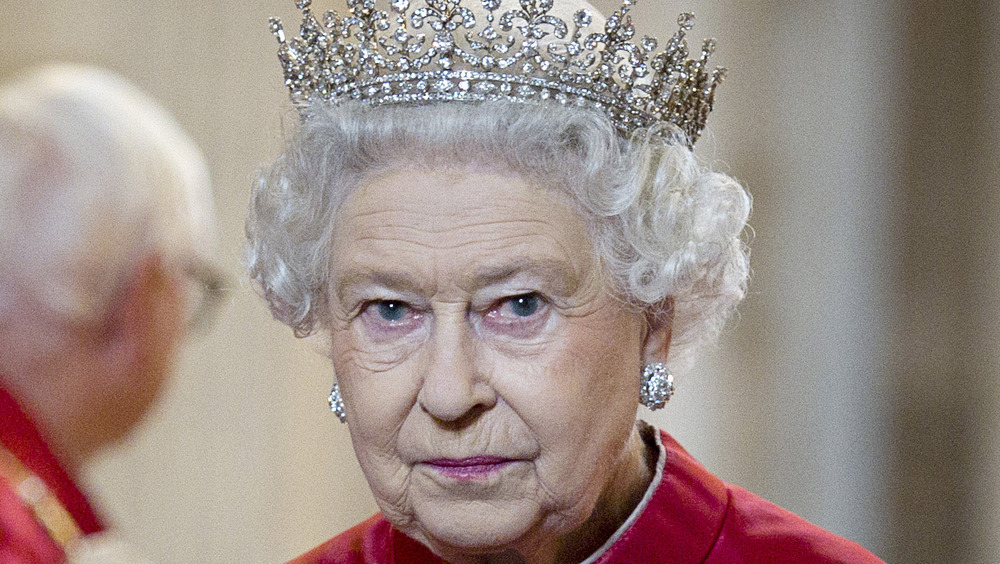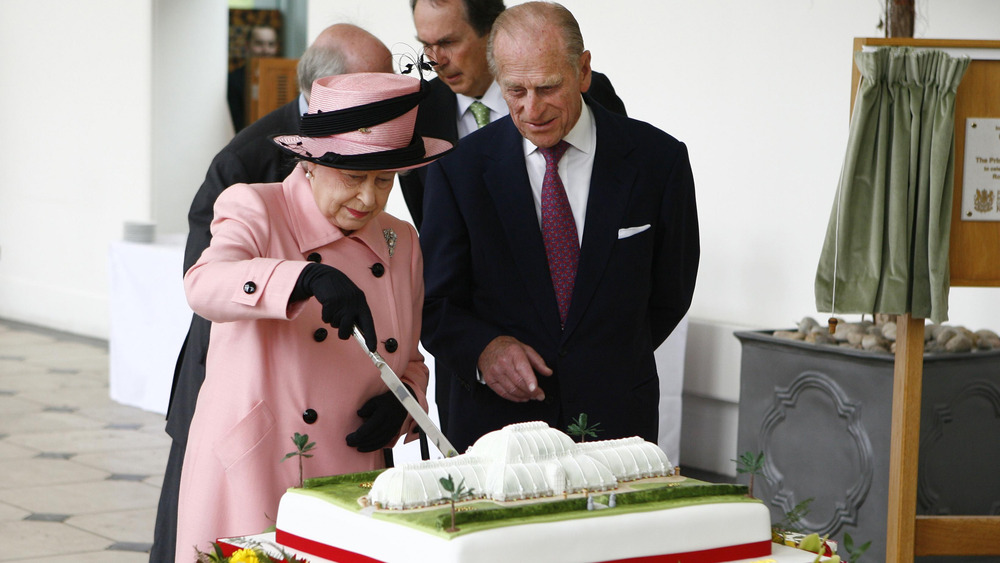The Surprising Items Hidden In Queen Elizabeth's Wedding Cake
Wedding cakes for British royalty are elaborate affairs. Remember that cake from Prince Harry and Meghan Markle's wedding in 2018 – the four-tiered, lemon-elderflower masterpiece (via Town & Country)? Well, that's just the tip of the icing cone in royal wedding cake history. As Hello! reports, Prince William and Kate Middleton's cake was eight tiers tall and weighed about 220 pounds. Queen Elizabeth and Prince Philip's confection was also eight tiers but weighed more than twice as much, at a hefty 500 pounds. Even in the 19th century, royal cakes were massive: Queen Victoria and Prince Albert's English plum cake (a modest three-tiered 300-pounder) was ten feet wide, about twice the Queen's height (via History).
The history of wedding cakes in Britain is long and complex. As Gastronomica explains, British cake-making has its roots in two main traditions: that of the Romans and that of the French. As early as the Medieval period, "spiced buns" were a normal part of British wedding ceremonies, with the baked goods arranged in a tower, across which bride and groom would attempt to kiss. The wedding cakes of today derive from a dessert known as "bride cake," which in turn stems from a savory dish called bride pie. Whereas bride pie was meat-based and hearty, the cake that evolved out of it consisted of fruit and, beginning around the 17th century, sugar-based icing. The history baked into these dishes would inspire the use of unexpected ingredients in Queen Elizabeth II's wedding cake.
A Charming Tradition
Bride pie and bride cake are linked by a tradition of charms and trinkets being baked into the middle of the dish. Bride pie sometimes contained a ring, the recipient of which was thought to be the next in line for marriage. Bride cakes, meanwhile, traditionally contained a number of different trinkets, and each had a special significance. This tradition was still alive and well by the time of the marriage of Queen Elizabeth and Prince Philip, whose wedding cake – a nine-foot-tall fruit cake – contained a trove of valuables. According to Hello!, the treasures were tucked away in the bottom tier. As per custom, a series of unique silver pieces were used, including a coin, a bell, a button, a thimble, a horseshoe, and a boot.
In the British tradition, the charms stand for a variety of things. As detailed in Gastronomica, the thimble and button symbolize, respectively, permanent spinster and bachelorhood. The symbols of the horseshoe and the bell, meanwhile, have been part of the British cake decorating since at least the 19th century (they made an appearance, notably, in the wedding cake of Prince Leopold). They portend, per Southern Living, good luck and the prospect of marriage. The boot, for its part, foretells travel. The meanings of the other items are more straightforward, with the silver coin betokening wealth and good luck and the ring indicating, again, marriage.

